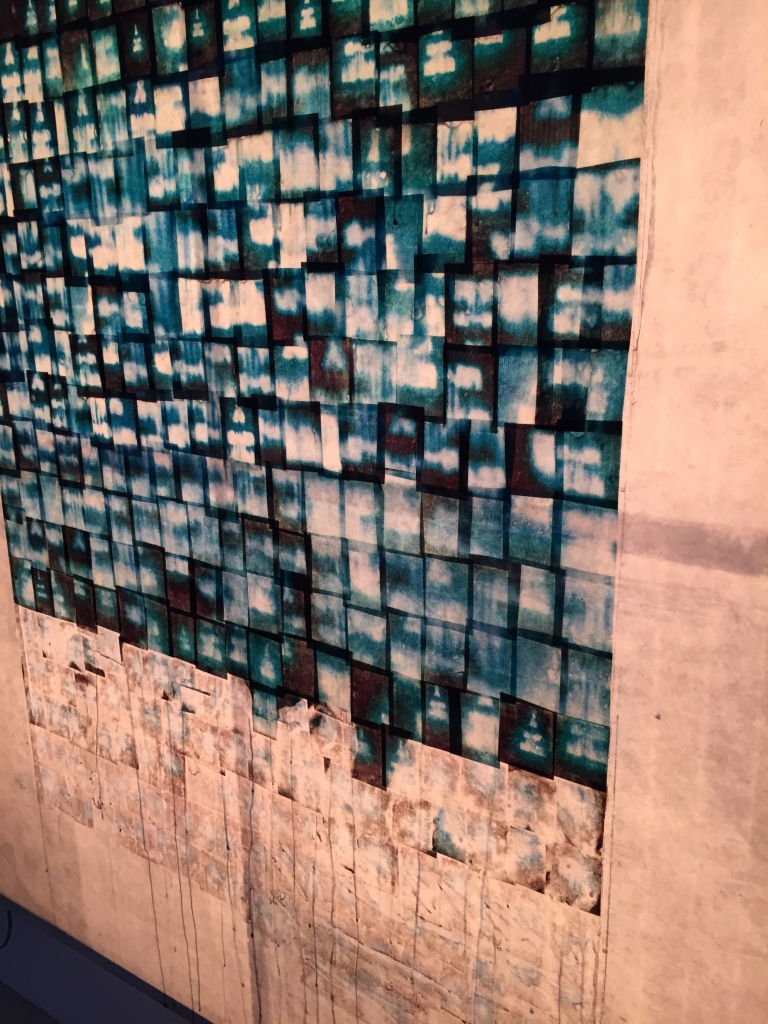This month, we hear from artist Hans Baumann who was commissioned by The ONWARD Project to research the archives of the Rainbow Bridge-Monument Valley Expedition, eventually binding the found knowledge into a single edition handmade art book.
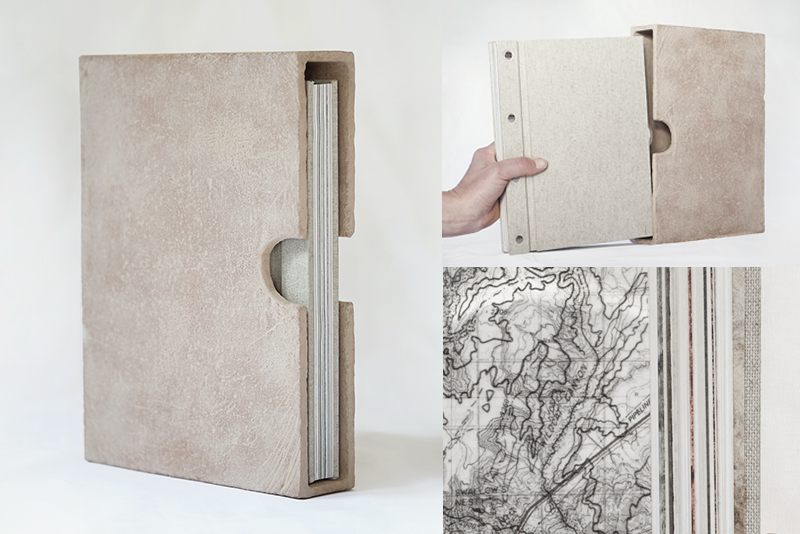
This project – titled “An Examination of the Legacy and Archives of the Rainbow Bridge-Monument Valley Expedition” – is the culmination of an approximately 18-month period in 2019 and 2020 studying the archives of the Rainbow Bridge-Monument Valley Expedition (RBMVE). It was commissioned by The ONWARD Project, a nonprofit that (in their own words) “inspires new understandings of history and place in the American Southwest.”

In addition to the material held by The ONWARD Project, I had the opportunity to visit the RBMVE archives at UCLA, as well as archaeological sites in Tsegi Canyon – specifically Bat Woman House and Twin Caves.
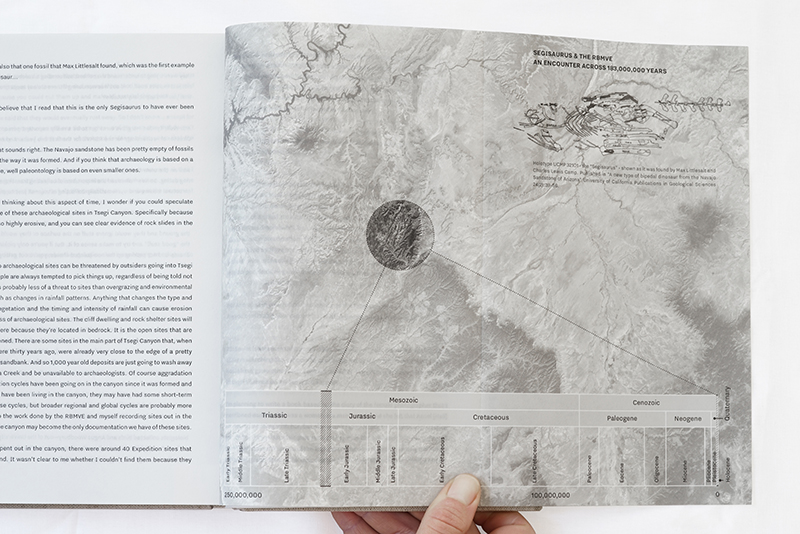
The project is structured around my interactions with these data and places in the present day, and I use the format of a handmade art book to attempt to contextualize the legacy of the Expedition from my (contemporary) perspective as an artist with a deep interest in the land.
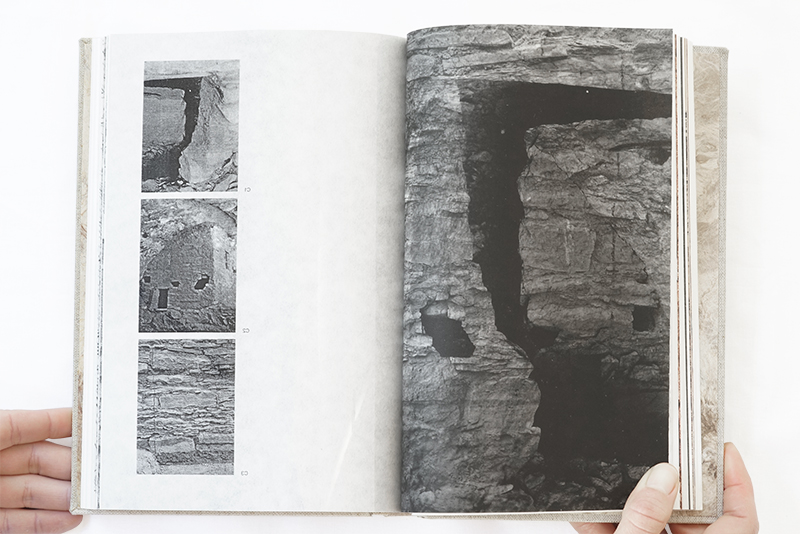
In an attempt to make this document of interest to the specialist, I include transcribed interviews with various academics, archaeologists and media specialists and use our exchanges to guide my historical inquiry.

All materials for this project – paper, inks, binding, clay – are archival quality. This was my initial criteria for any material selection, as it is critical that this book be durable and have a viable trajectory (as an object) into the future. It is intended to communicate with generations beyond our own. Beyond this, I wanted the book to evoke the subject matter that it addresses.
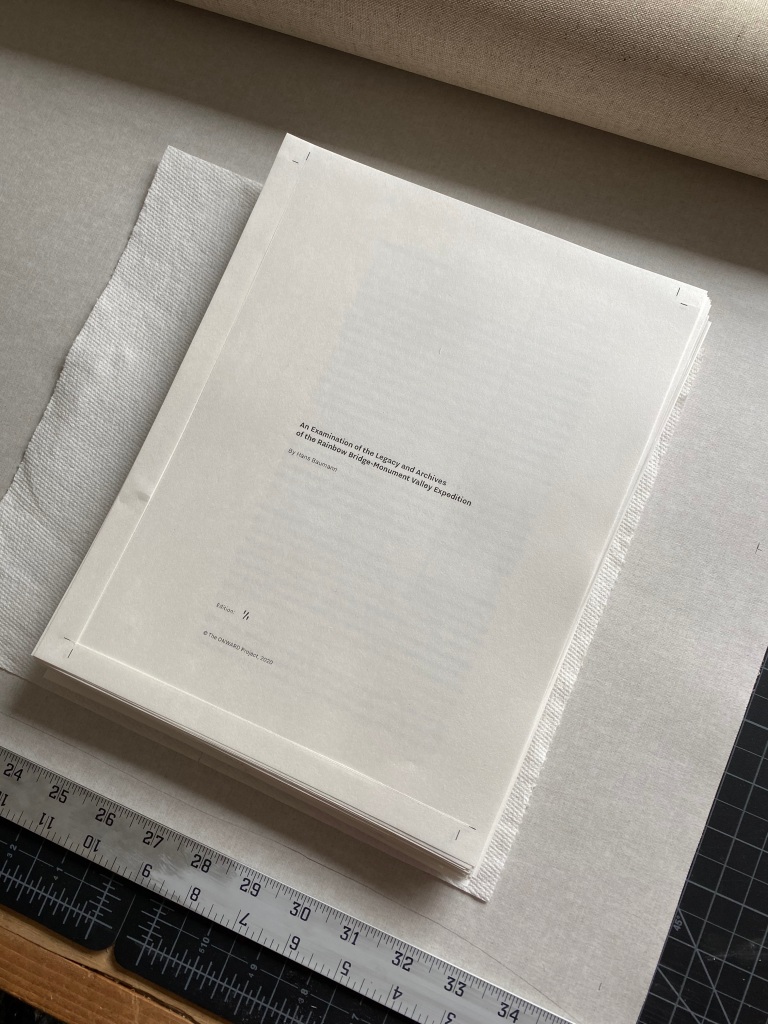
Not only did I want it to feel “of” the archive, I wanted it to combine the colors and textures of Tsegi Canyon, as well as the grand transit of time that the book’s text addresses. The book’s enclosure is a ceramic slipcase and I went through an extended process of experimenting with various additives and finishes such that the ceramic feels somewhere between red Navajo sandstone and the many fractured and eroded potsherds found throughout the Canyon.

The book is bound in a post and screw style with nickel hardware and uses an undyed, half linen, half cotton book cloth, and the endsheets use an Amate paper made by Otomi craftsmen in Central Mexico.


This paper was chosen because its ivory and walnut tones call to mind the stacks of undyed sheep’s wool that can be seen drying on racks outside homes in Tsegi Canyon. This is a very specific and personal memory, but also a visual reference point that many others will have if they have been to the Canyon during shearing season.
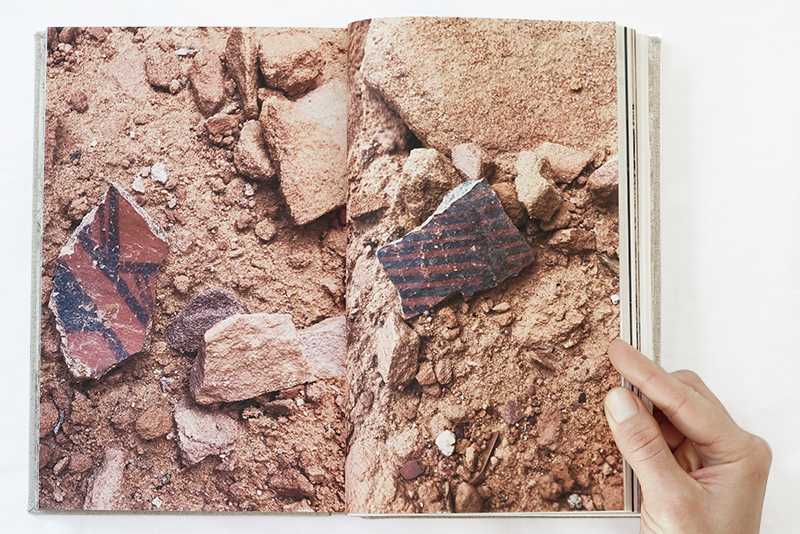
The interior pages of the book use two types of paper. An acetate film is used when overlays are needed. Otherwise, I use a pure white Asuka paper from Japan.

I spent several weeks finding this paper, as I wanted to use something that would hold an image well but also be a pleasure to touch and to turn. Every archival quality Western paper that I encountered failed to meet all of these criteria, and I eventually chose this midweight washi paper for its distinct paper grain, its unobtrusive but pleasant texture and its ability to accept printed images with no bleeding or image degradation.

I would like to give special thanks to the Littlesalt and Austin families for allowing me to visit Tsegi Canyon. I would also like to thank Elizabeth Kahn, Madi Fair, Allison Fischer Olson, Ron Maldonado and Marydee and Chris Donnan for their time and assistance with the research component of this project, and to Prof. Snead, Eric Hanson and Andy Christenson for time and consideration throughout the interview process. Thanks to Joel Freeman for his assistance throughout the project. Additional thanks to Wendy Teeter and Sedonna Goeman-Shulsky for their generosity, patience and expertise as I explored the RBMVE archives at UCLA.





















